Whilst in Borneo, Stuart, Robin and I went for a trip to “Bush Pig” a little jungle camp built by Bod and some friends as a weekend retreat. Now to get to the Bush Pig, requires a 40-50 minute trek through the jungle

which brings you to a large lake.
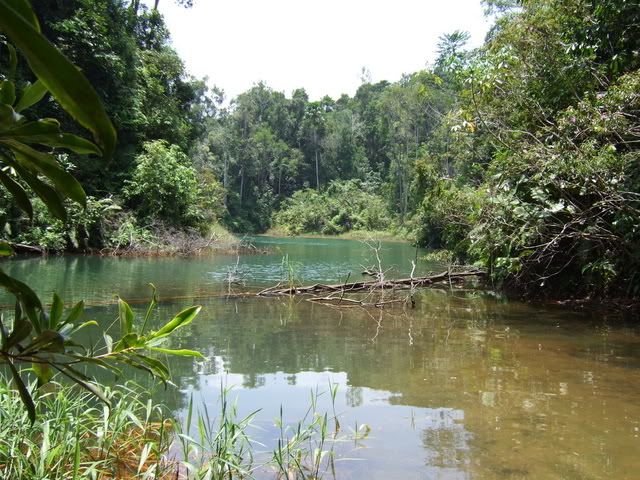
Here we found a number of surf boards a sit on top and home made paddles.
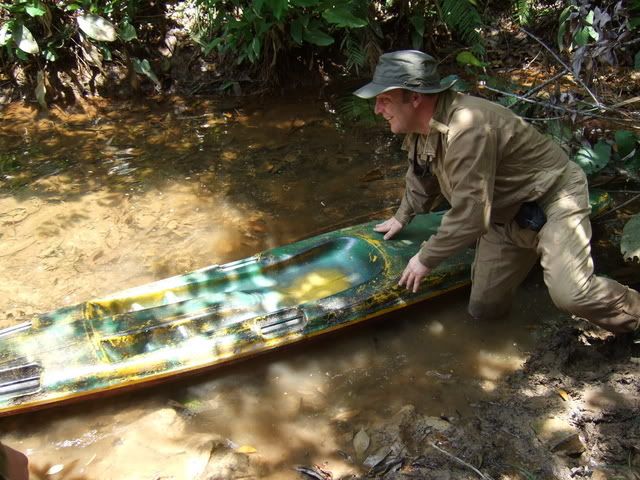
A 10 minute paddle brings us to the site.
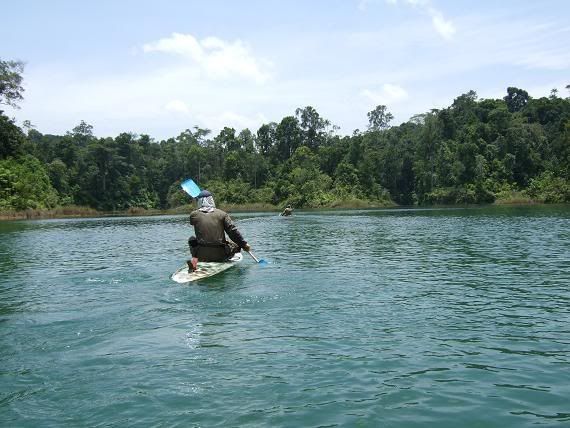
Stuart experimented with various paddling techniques, one of which entailed sitting on his pack. This raised his centre of gravity which resulted in....
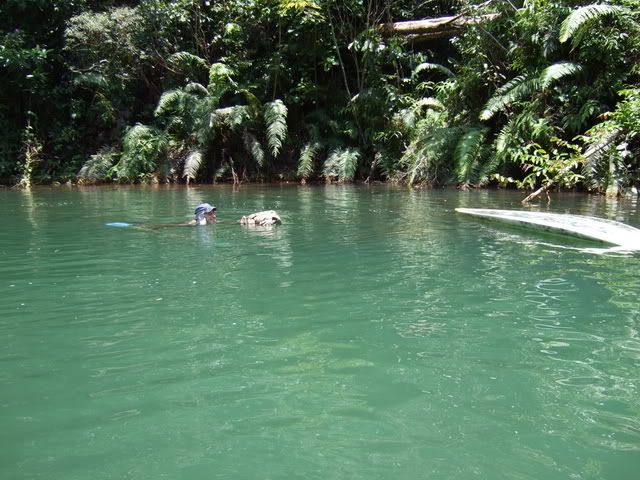
When we arrived there a nice covered table with bench seats already built. So first things first, light a fire for a cup of tea.
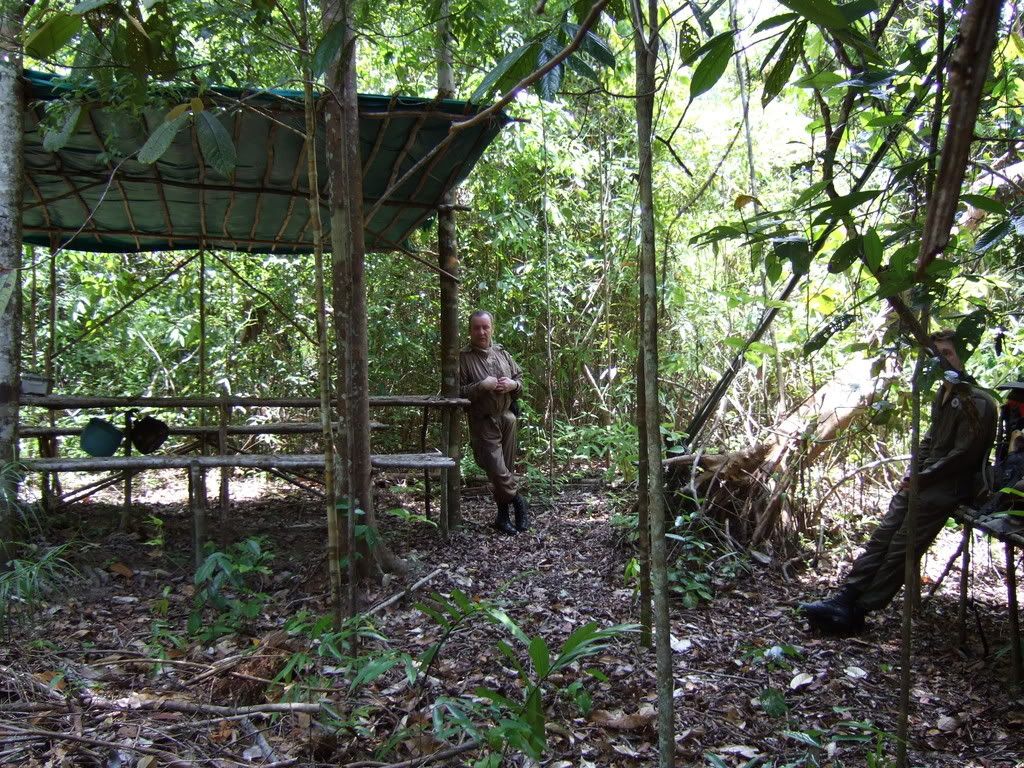
The site is lovely with clear water and thousands of flies. An old termite nest was added to the fire to smoke the little pests away.
Next job was an improvised tarp raft which I'm sure you'll all agree was a huge success!
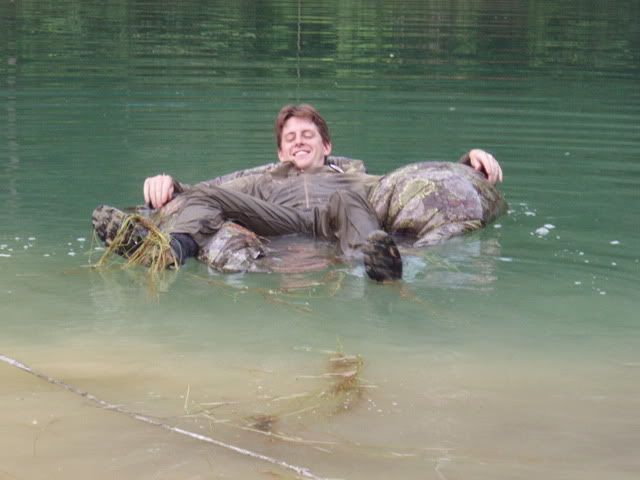
The fire was a normal ground fire and when it started to rain we had to grab some palm fronds to keep it dry. So what was needed was a proper jungle fire temple. This is a raised fire place used throughout the tropics that consists of three main parts; the fire platform which has a sand or soil box for the fire to sit on, a rack above the fire for drying out firewood and hanging pots from and a thatched roof to keep the whole thing dry. This little article walks through our construction.
While Robin & I set about harvesting sufficient staves to build the frame, rack and roof, Stuart set to work obtaining the base of the sand box. This is a piece of bark and quite tricky to get off in one piece. Of course the tree wasn’t completely ringed, this would kill the tree, only 2 thirds of the tree’s circumference was barked.
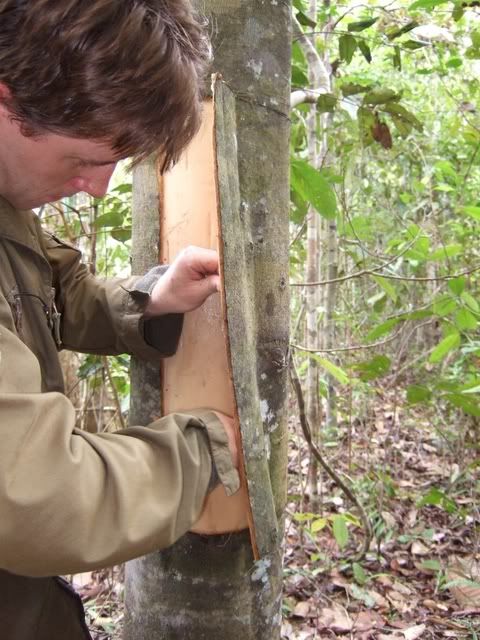
The frame used a couple of existing trees for verticals to give us rigidity and work progressed until we had four verticals with cross ties for strength to act as the base for the sand box and the drying rack.

One of the pleasures of building in the jungle is the abundance of materials. The tree’s grow straight and fast (in fact finding trees with forked ends proved to be a real challenge).
Rattan and various aerial roots are everywhere so cordage is plentiful and for roofing palm fronds are again plentiful.
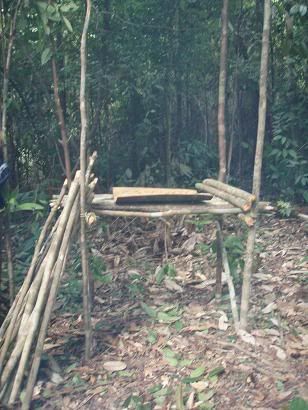
Once the basic frame was up and the soil box was ready (which consisted of the bark sheet and four pieces of wood notched together to form the open toped box), the next task was to collect the sand. This meant going down to the lake with a head net and wading out beyond the leaf litter covering the inshore lake floor and trawling the sand into the net. Once full the net was hung up to allow the water to drain out and the remaining wet sand was then put on to the bark. A couple of trips were needed.
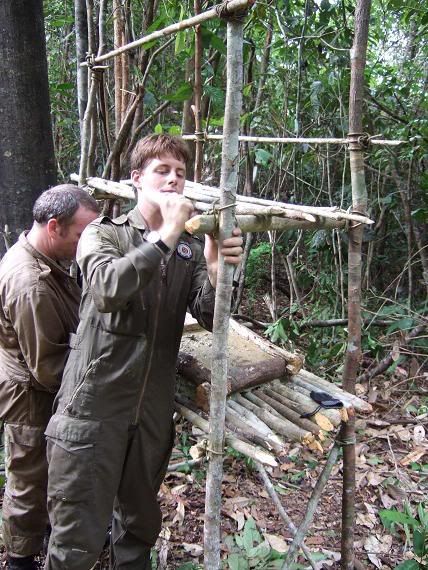
I went off to gather palm fronds for the roof while the others got a fire going in the sand box to help dry it out.
Stuart demonstrated the thatching of the roof, which is a good thing really as I was too short to reach.
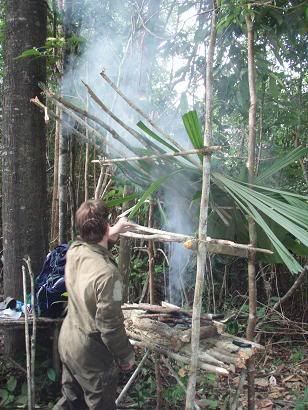
As usual you start from the base of the roof and work up so that each successive layer overlaps the lower one to provide effective run off. The fronds are used to tie themselves off to the framework.
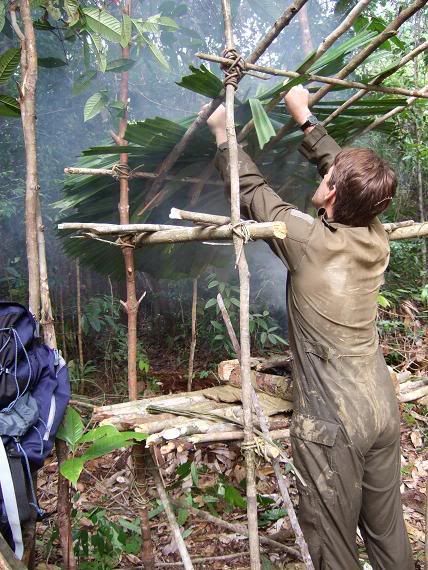
With the roof thatched and trimmed the fire temple was complete and rather nice looking as well. With luck it will last for a few seasons and provide users of the camp with a dry environment to cook with.
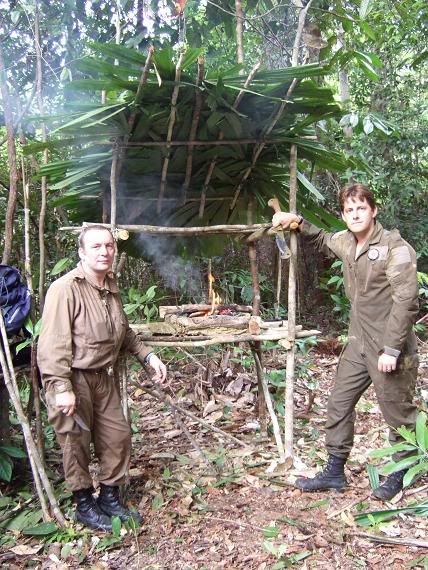
Whilst the roofing was happening, Robin prepared supper and after that with light fading it was back onto the boards and paddling by moonlight to watch the bats hunting over the lake.
It was time to leave an we had agreed to make the short trek back at night. A wonderful experience.

which brings you to a large lake.

Here we found a number of surf boards a sit on top and home made paddles.

A 10 minute paddle brings us to the site.

Stuart experimented with various paddling techniques, one of which entailed sitting on his pack. This raised his centre of gravity which resulted in....

When we arrived there a nice covered table with bench seats already built. So first things first, light a fire for a cup of tea.

The site is lovely with clear water and thousands of flies. An old termite nest was added to the fire to smoke the little pests away.
Next job was an improvised tarp raft which I'm sure you'll all agree was a huge success!

The fire was a normal ground fire and when it started to rain we had to grab some palm fronds to keep it dry. So what was needed was a proper jungle fire temple. This is a raised fire place used throughout the tropics that consists of three main parts; the fire platform which has a sand or soil box for the fire to sit on, a rack above the fire for drying out firewood and hanging pots from and a thatched roof to keep the whole thing dry. This little article walks through our construction.
While Robin & I set about harvesting sufficient staves to build the frame, rack and roof, Stuart set to work obtaining the base of the sand box. This is a piece of bark and quite tricky to get off in one piece. Of course the tree wasn’t completely ringed, this would kill the tree, only 2 thirds of the tree’s circumference was barked.

The frame used a couple of existing trees for verticals to give us rigidity and work progressed until we had four verticals with cross ties for strength to act as the base for the sand box and the drying rack.

One of the pleasures of building in the jungle is the abundance of materials. The tree’s grow straight and fast (in fact finding trees with forked ends proved to be a real challenge).
Rattan and various aerial roots are everywhere so cordage is plentiful and for roofing palm fronds are again plentiful.

Once the basic frame was up and the soil box was ready (which consisted of the bark sheet and four pieces of wood notched together to form the open toped box), the next task was to collect the sand. This meant going down to the lake with a head net and wading out beyond the leaf litter covering the inshore lake floor and trawling the sand into the net. Once full the net was hung up to allow the water to drain out and the remaining wet sand was then put on to the bark. A couple of trips were needed.

I went off to gather palm fronds for the roof while the others got a fire going in the sand box to help dry it out.
Stuart demonstrated the thatching of the roof, which is a good thing really as I was too short to reach.

As usual you start from the base of the roof and work up so that each successive layer overlaps the lower one to provide effective run off. The fronds are used to tie themselves off to the framework.

With the roof thatched and trimmed the fire temple was complete and rather nice looking as well. With luck it will last for a few seasons and provide users of the camp with a dry environment to cook with.

Whilst the roofing was happening, Robin prepared supper and after that with light fading it was back onto the boards and paddling by moonlight to watch the bats hunting over the lake.
It was time to leave an we had agreed to make the short trek back at night. A wonderful experience.

 Leeches, spiders, snakes, centipedes, all layed on!!
Leeches, spiders, snakes, centipedes, all layed on!!